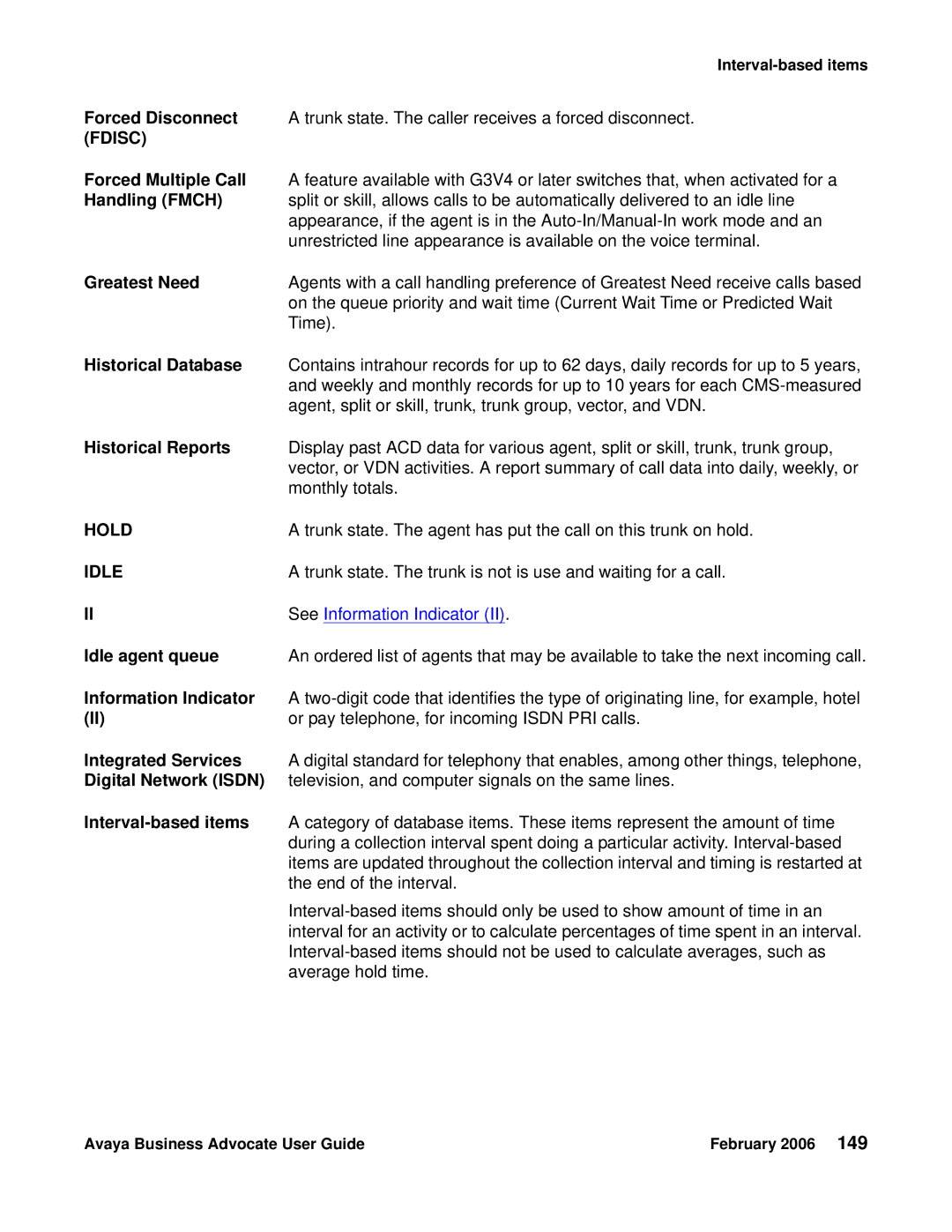| |
Forced Disconnect | A trunk state. The caller receives a forced disconnect. |
(FDISC) |
|
Forced Multiple Call | A feature available with G3V4 or later switches that, when activated for a |
Handling (FMCH) | split or skill, allows calls to be automatically delivered to an idle line |
| appearance, if the agent is in the |
| unrestricted line appearance is available on the voice terminal. |
Greatest Need | Agents with a call handling preference of Greatest Need receive calls based |
| on the queue priority and wait time (Current Wait Time or Predicted Wait |
| Time). |
Historical Database | Contains intrahour records for up to 62 days, daily records for up to 5 years, |
| and weekly and monthly records for up to 10 years for each |
| agent, split or skill, trunk, trunk group, vector, and VDN. |
Historical Reports | Display past ACD data for various agent, split or skill, trunk, trunk group, |
| vector, or VDN activities. A report summary of call data into daily, weekly, or |
| monthly totals. |
HOLD | A trunk state. The agent has put the call on this trunk on hold. |
IDLE | A trunk state. The trunk is not is use and waiting for a call. |
II | See Information Indicator (II). |
Idle agent queue | An ordered list of agents that may be available to take the next incoming call. |
Information Indicator | A |
(II) | or pay telephone, for incoming ISDN PRI calls. |
Integrated Services | A digital standard for telephony that enables, among other things, telephone, |
Digital Network (ISDN) | television, and computer signals on the same lines. |
| A category of database items. These items represent the amount of time |
| during a collection interval spent doing a particular activity. |
| items are updated throughout the collection interval and timing is restarted at |
| the end of the interval. |
| |
| interval for an activity or to calculate percentages of time spent in an interval. |
| |
| average hold time. |
Avaya Business Advocate User Guide | February 2006 149 |
